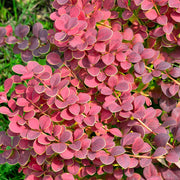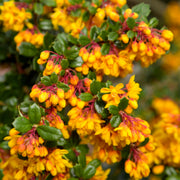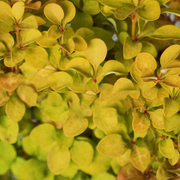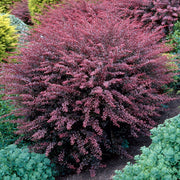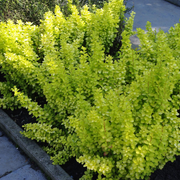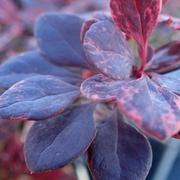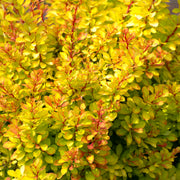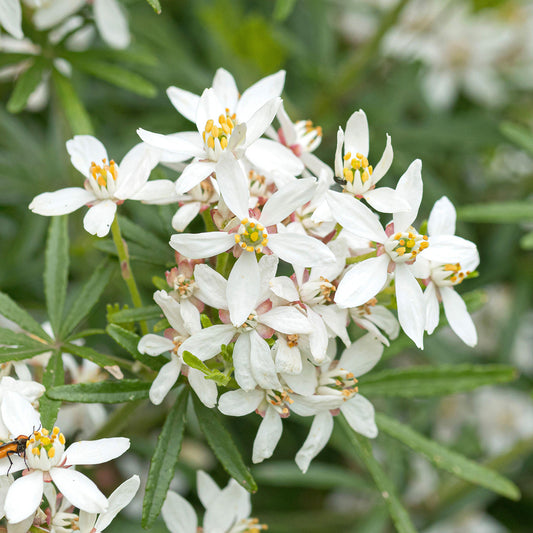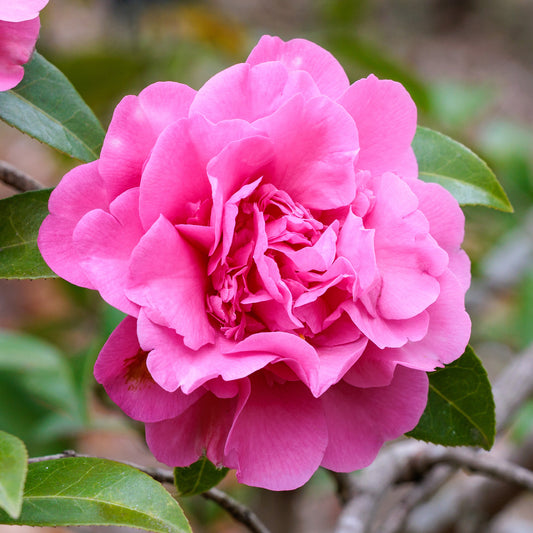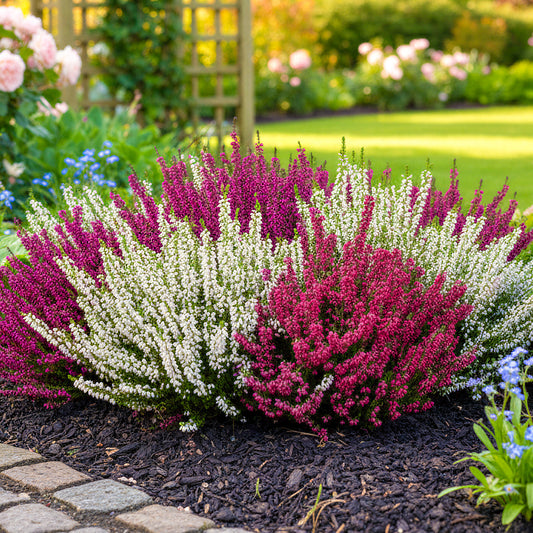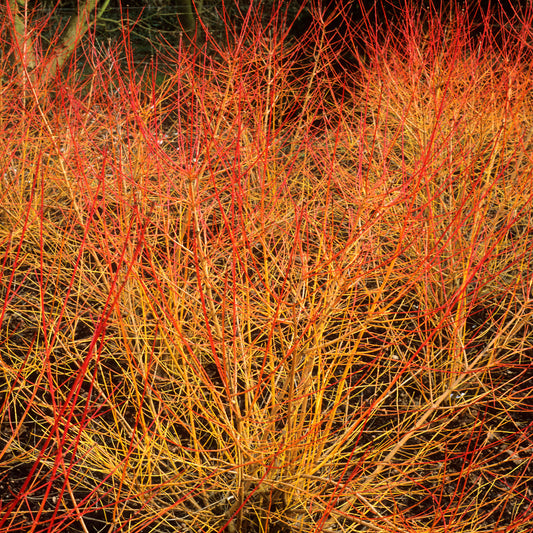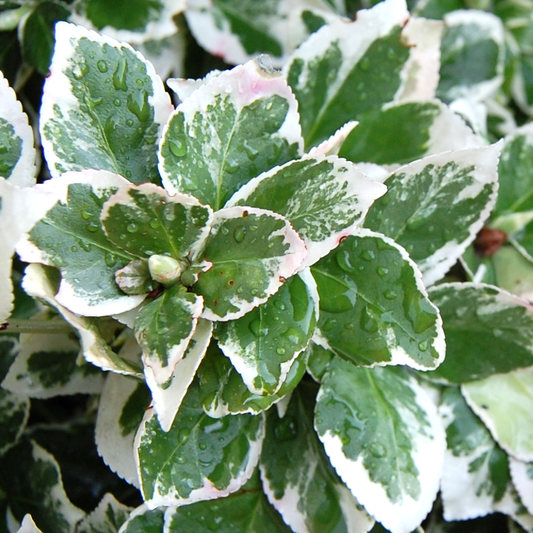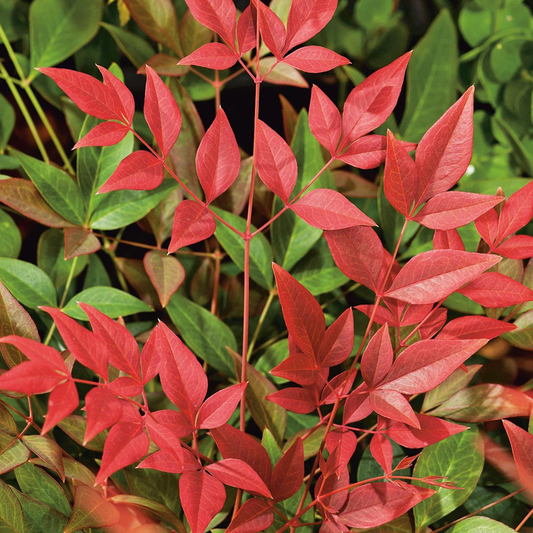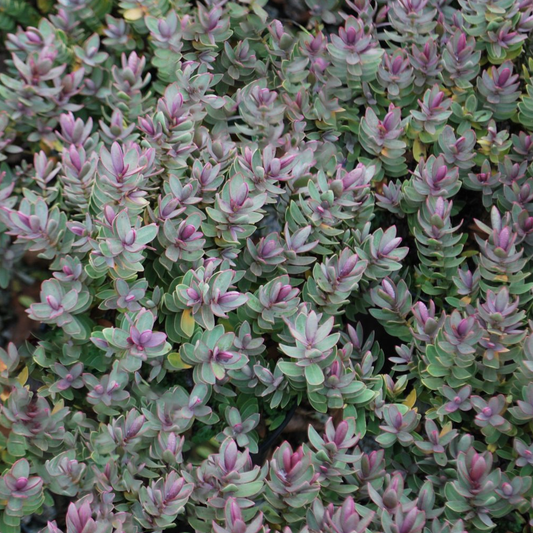Product description
Berberis thunbergii Harlequin is a striking Japanese Barberry shrub that produces very unusual foliage colours throughout the summer. It is a multi-stemmed deciduous shrub with compact and upright growing habit. It features pink-red and green leaves that appear very ornamental and will brighten up any dull corners in your garden. Its thorny stems make it perfect for use in hedging to keep any intruders away.
Japanese Barberry is a dense shrub that carries multi-seasonal interest. In the spring season, small inconspicuous yellow flowers emerge, that are followed by beautiful ovate purple leaves with a greenish centre and marble-like patches of pinkish-red colours. These leaves develop a deeper tone of red in autumn. Around the same time, glossy and bright red berries will create a vibrant display with the leaves.
Berberis Harlequin prefers full sunlight but does well even in partial shade. It is a tough and drought tolerant bush that needs average watering when planted in well-drained soil. It can adapt to different soil conditions except for the wet ones.
As the plant matures, it develops great tolerance to city pollution. It does not demand any special fertiliser or care in winter when its leaves will autumn, showing its naked spiny arching branches. Pruning Japanese Barberry is easy in winters and is required to keep its shape and size in control.
Berberis Harlequin is a great specimen plant for a sunny border. Use them in front of a border or along a fence in a lawn. It forms a perfect barrier or hedge. Its bold and eye-catching foliage will add distinct ornamental value to your garden.
Garden Plant Size Guide

Plants in larger pots can be multiple years older than their smaller counterparts with more mature root systems and foliage. This makes them able to thrive as a full size plant in your garden quicker than smaller alternatives.
The most common size of pot that garden plants come in are 9cm/1L/3L/5L this is in reference to the diameter at the top of the pot.
9cm potted plants still remain the most popular cost effective option though, they just may take a little patience to allow them to grow into full maturity once planted in your garden.
Plant specs, care guide & tips
Key features
When to plant
| Jan | Feb | Mar | Apr | May | Jun | Jul | Aug | Sep | Oct | Nov | Dec |
|---|---|---|---|---|---|---|---|---|---|---|---|
Planting and period of interest times are general guidelines and may vary based on your location and conditions. For best results, consult local gardening resources.
Instructions
Top Tip
Berbaris plants are covered in spines, so always protect yourself with gloves and long sleeves when tending them.
How to Water
Water generously and regularly for the first growing season. After this, berbaris is relatively drought tolerant and only needs to be watered during particularly dry spells.
How to Plant
Berberis grows well in most moist but well-draining soil types and thrives in full sun or partial shade. Prepare the ground, digging in some garden compost and position the plant in the hole before backfilling and watering in well.







